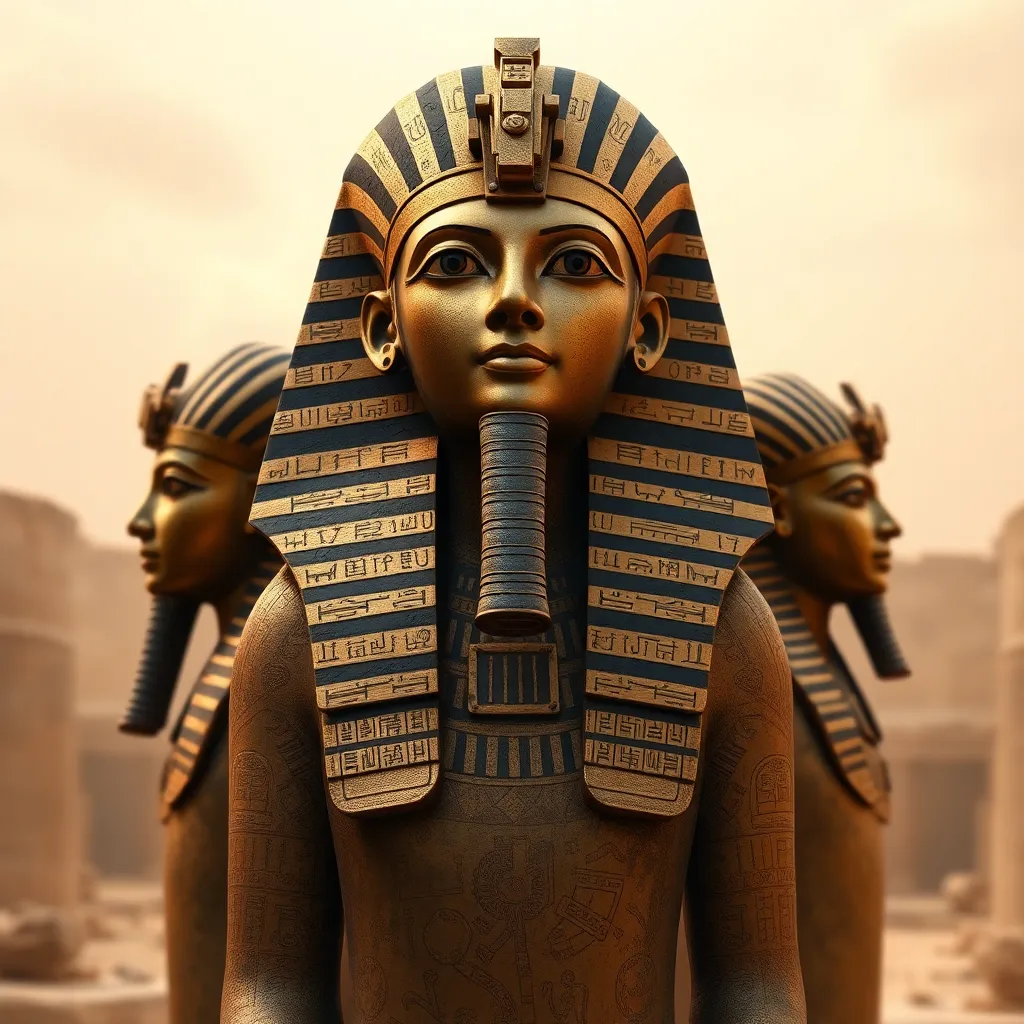The Pharaohs: Their Stories, Their Power, and Their Influence on Ancient Egyptian Art and Culture
Introduction
The Pharaohs of Ancient Egypt stand as monumental figures in the annals of history, embodying the intricate blend of governance, religion, and culture that defined one of the most remarkable civilizations. As absolute rulers, they held immense power and were revered not only as leaders but also as gods on Earth. The Pharaohs played a crucial role in shaping the cultural landscape of Ancient Egypt, influencing art, religion, and daily life.
The Role of Pharaohs in Ancient Egypt
A Pharaoh was not merely a political leader; they were the embodiment of divine authority and the ultimate arbiter of the law. Their responsibilities included:
- Ensuring the prosperity of the land through effective governance.
- Maintaining Ma’at, the ancient Egyptian concept of truth, balance, and order.
- Serving as the chief priest, performing rituals to appease the gods.
- Leading the military and defending the kingdom against threats.
This theocratic governance was based on the belief in the divine right to rule, which positioned the Pharaoh as a mediator between the gods and the people. The Pharaoh’s decrees were seen as the will of the gods, granting them unquestionable authority.
Famous Pharaohs and Their Legends
Throughout Ancient Egyptian history, several Pharaohs have left indelible marks on the world. Here are notable figures:
- Ramses II (c. 1303–1213 BCE) – Often regarded as the greatest Pharaoh, Ramses II is celebrated for his military conquests and monumental construction projects, including the temples at Abu Simbel.
- Tutankhamun (c. 1341–1323 BCE) – Known as the “boy king,” his tomb was discovered largely intact in 1922, providing immense insight into the wealth and culture of Ancient Egypt.
- Cleopatra VII (69–30 BCE) – The last active ruler of the Ptolemaic Kingdom, Cleopatra is known for her intelligence, political acumen, and her relationships with Julius Caesar and Mark Antony.
These Pharaohs not only shaped the political landscape of their time but also created legends that continue to captivate people’s imaginations today.
The Pharaohs and Their Power Structures
The political system of Ancient Egypt under the Pharaohs was complex and hierarchical. The Pharaoh was at the top, supported by a network of nobles, priests, and military leaders. Key components included:
- Nobles: They held significant land and power, often acting as governors of regions.
- Priests: As religious leaders, they played a vital role in maintaining the Pharaoh’s divine status and conducting rituals.
- Military Leaders: They ensured the protection of the kingdom and expanded its borders through conquest.
To consolidate power, Pharaohs employed various strategies, including strategic marriages, military campaigns, and the establishment of a bureaucratic system to manage resources efficiently.
Influence of Pharaohs on Ancient Egyptian Art
The Pharaohs had a profound impact on the artistic expression of their time. Their portrayal in art served to reinforce their divine status and authority. Key aspects include:
- Sculpture and Relief Work: Pharaohs were often depicted in a larger-than-life manner, showcasing their strength and divinity.
- Painting: Wall paintings in tombs often illustrated the Pharaoh’s journey to the afterlife, emphasizing their eternal nature.
- Symbolism: Art was imbued with meaning, using symbols like the ankh (life) and the crook and flail (royal authority) to convey messages about the Pharaoh’s role.
Artistic styles evolved under different Pharaohs, reflecting changes in culture and society throughout the ages.
Pharaohs and Religion: Art as a Medium for Worship
The relationship between Pharaohs and the pantheon of Egyptian gods was intricate and deeply spiritual. Temples and monuments served as grand artistic representations of divine power. Important elements include:
- Temples: Built as places of worship, these structures were adorned with intricate carvings and paintings depicting the Pharaoh’s interactions with gods.
- Monuments: The construction of pyramids and monuments was a testament to a Pharaoh’s power and their connection to the divine.
- Rituals: Numerous ceremonies involved artistic expression, reinforcing the Pharaoh’s role as a divine intermediary.
This close relationship between art and religion underscores the Pharaoh’s role in maintaining cosmic order.
Cultural Legacy of the Pharaohs
The influence of the Pharaohs extended beyond politics and art, permeating daily life in Ancient Egypt. Their legacies shaped various aspects of Egyptian culture:
- Literature: Stories of the Pharaohs inspired countless tales, poetry, and inscriptions.
- Music: Music played a role in both the daily and ceremonial life of Egyptians, often celebrating the Pharaoh’s achievements.
- Folklore: Myths and legends surrounding Pharaohs became an integral part of Egyptian identity, influencing future generations.
Their cultural legacy continues to resonate, influencing modern perceptions of Ancient Egypt and sparking widespread fascination with its history.
Conclusion
The Pharaohs of Ancient Egypt were much more than rulers; they were pivotal figures whose influence permeated every aspect of life, from governance and religion to art and culture. Their multifaceted legacy continues to captivate scholars and enthusiasts alike, reminding us of the complexity and richness of Ancient Egyptian civilization. Understanding the stories of the Pharaohs is essential for appreciating their significance in world history and their lasting impact on contemporary society.




